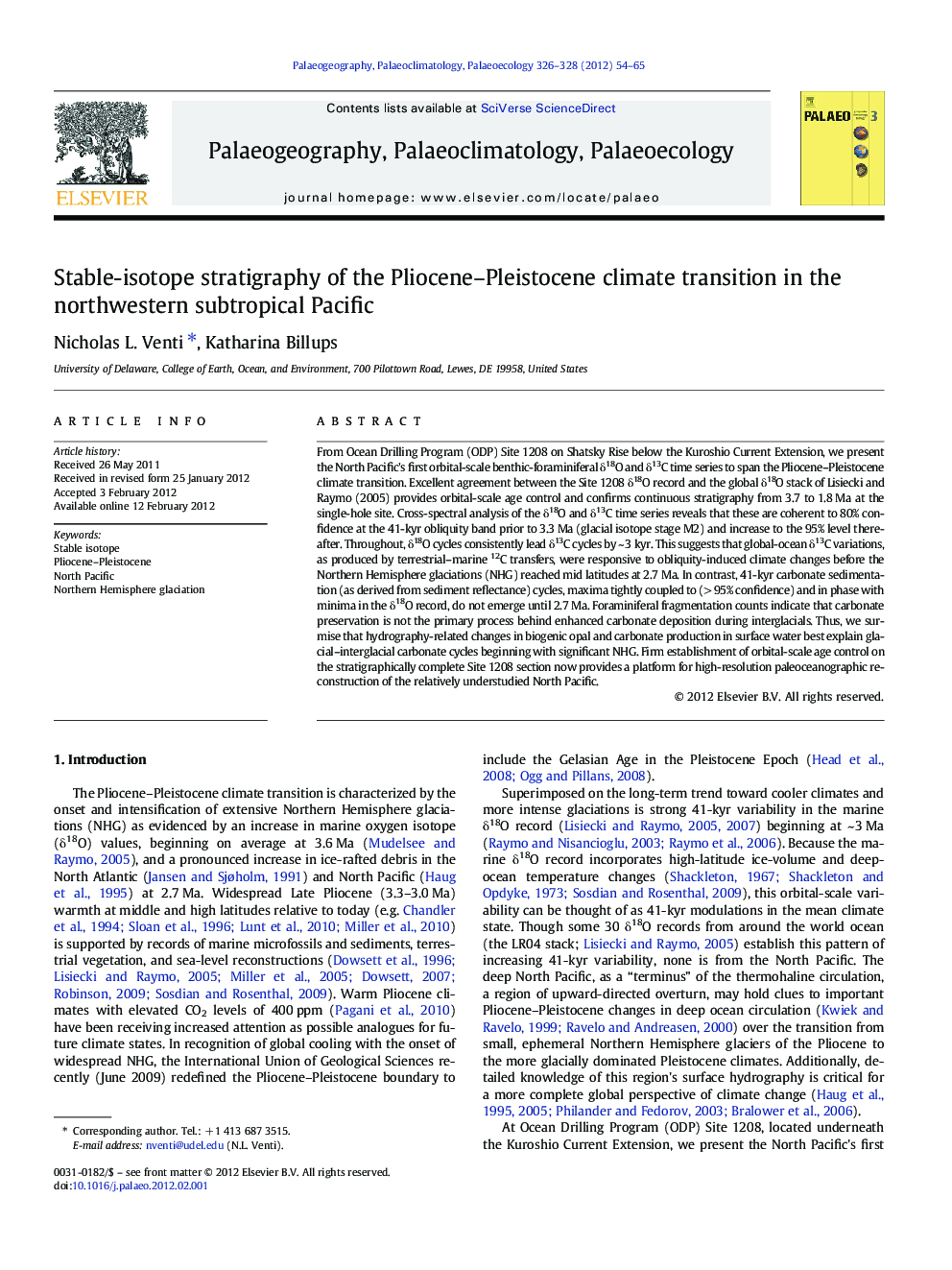| کد مقاله | کد نشریه | سال انتشار | مقاله انگلیسی | نسخه تمام متن |
|---|---|---|---|---|
| 4466965 | 1622236 | 2012 | 12 صفحه PDF | دانلود رایگان |

From Ocean Drilling Program (ODP) Site 1208 on Shatsky Rise below the Kuroshio Current Extension, we present the North Pacific's first orbital-scale benthic-foraminiferal δ18O and δ13C time series to span the Pliocene–Pleistocene climate transition. Excellent agreement between the Site 1208 δ18O record and the global δ18O stack of Lisiecki and Raymo (2005) provides orbital-scale age control and confirms continuous stratigraphy from 3.7 to 1.8 Ma at the single-hole site. Cross-spectral analysis of the δ18O and δ13C time series reveals that these are coherent to 80% confidence at the 41-kyr obliquity band prior to 3.3 Ma (glacial isotope stage M2) and increase to the 95% level thereafter. Throughout, δ18O cycles consistently lead δ13C cycles by ~ 3 kyr. This suggests that global-ocean δ13C variations, as produced by terrestrial–marine 12C transfers, were responsive to obliquity-induced climate changes before the Northern Hemisphere glaciations (NHG) reached mid latitudes at 2.7 Ma. In contrast, 41-kyr carbonate sedimentation (as derived from sediment reflectance) cycles, maxima tightly coupled to (> 95% confidence) and in phase with minima in the δ18O record, do not emerge until 2.7 Ma. Foraminiferal fragmentation counts indicate that carbonate preservation is not the primary process behind enhanced carbonate deposition during interglacials. Thus, we surmise that hydrography-related changes in biogenic opal and carbonate production in surface water best explain glacial–interglacial carbonate cycles beginning with significant NHG. Firm establishment of orbital-scale age control on the stratigraphically complete Site 1208 section now provides a platform for high-resolution paleoceanographic reconstruction of the relatively understudied North Pacific.
► First orbital-scale benthic δ18O record from Pliocene–Pleistocene North Pacific.
► δ18O record establishes excellent age control, confirms complete section.
► Carbon cycle (δ13C) responded to glacial cycles, independent of glacial magnitude.
► Sedimentation (sea surface) responded only to larger Pleistocene glaciations.
Journal: Palaeogeography, Palaeoclimatology, Palaeoecology - Volumes 326–328, 1 April 2012, Pages 54–65